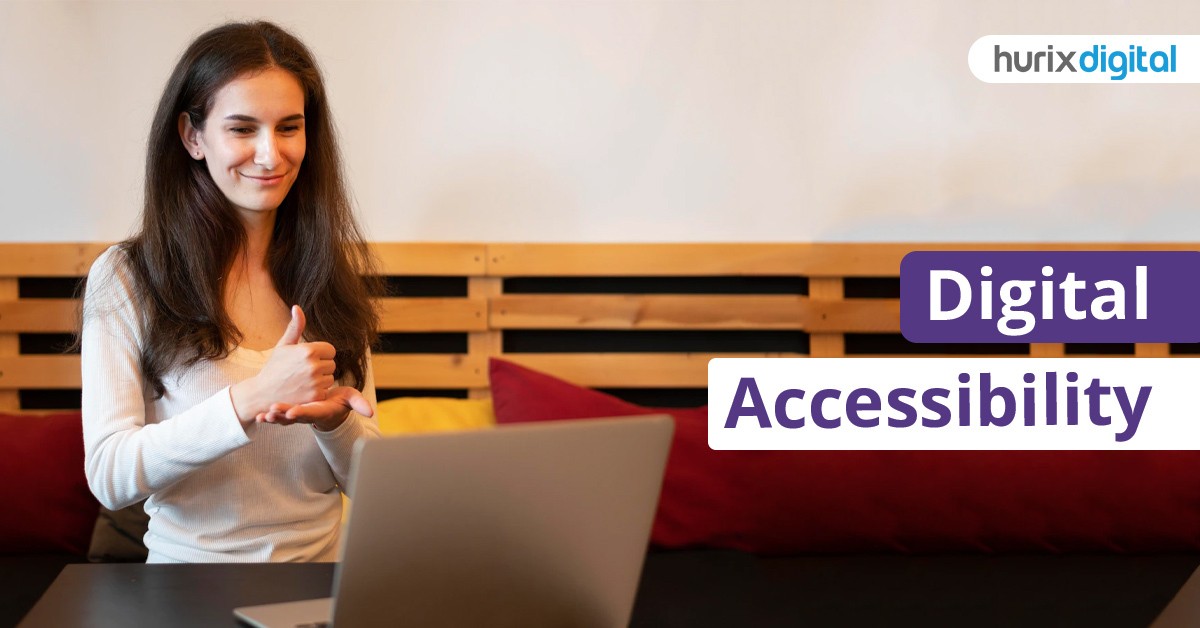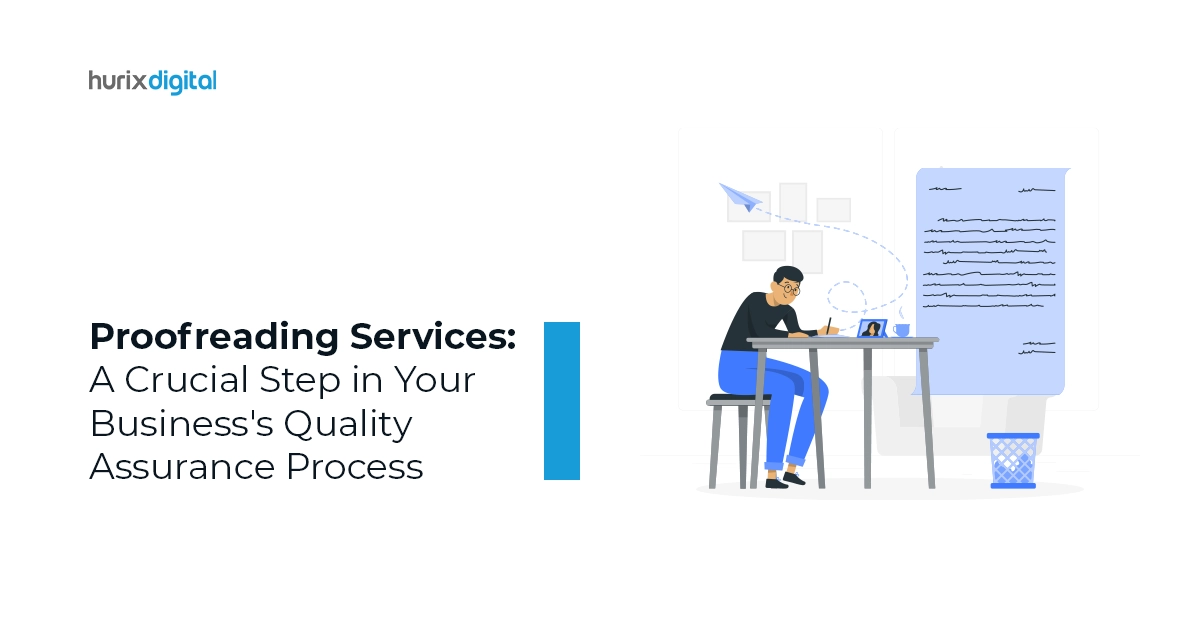
Why Do You Need Digital Accessibility?
Digital accessibility refers to technology being designed in such a way that it can be accessed by all users, regardless of their physical and intellectual capabilities. It comes in forms such as electronic documents, websites, software, hardware, video, audio, and other digital assets. This is a very broad group that encounters technology, and so, therefore, it means that technology should be accessible to all, whether one has visual, hearing, neurological, motor, physical, or intellectual disabilities.
However, when websites, applications, technologies, or tools are poorly designed, they in turn can create new barriers that could exclude people from using the Web. Therefore, Digital Accessibility is essential for Quality assurance, developers, and organizations that want to create high-quality websites and web tools and not exclude people from using their products and services.
Accessibility and usability are different for a reason. Usability focuses on ensuring that products and digital experiences are accessible for easy use and enjoyment while giving special attention to how people with disabilities will experience them. Accessibility ensures that all users can access and enjoy products with equal ease. Prioritizing accessibility in digital design ensures that everyone, including those with disabilities, can access and enjoy online experiences equally. Unlike usability, accessibility focuses on all users.
Table of Contents:
- Why Should We Make Digital Accessibility a Priority?
- Web Accessibility: An Overview
- POUR Principles of Digital Accessibility
- Examples of Digital Accessibility
- Conclusion
Why Should We Make Digital Accessibility a Priority?
Digital accessibility ensures universal access to all: every website and application needs to be designed keeping this in mind. One of the important consequences of the pandemic is working from home: this automatically implies greater accessibility for everyone. The brand image of the company whose website is accessible by everyone will certainly stand apart from the rest. Greater accessibility means better user experience. More people accessing the website translates to a higher ranking in Search Engine Optimization (SEO). Legal expenses on account of lawsuits filed against companies whose websites are not accessible show a significant increase from 2019.
In many ways, be it legal to obligatory to compassion and concern, digital accessibility laws are increasing in significance. It is the right thing to do and it benefits not only those with impairments but all of us.
Web Accessibility: An Overview
Websites are an important part of Digital Accessibility, when websites are designed in such a way that people with disabilities can also use them, it means that the website is accessible or that there is web accessibility. It means that people can understand, navigate, and interact with and through the website and contribute to the web.
Wikipedia defines web accessibility as an inclusive practice of ensuring that there are no barriers that prevent people with disabilities, physical or situational, and those with socio-economic restrictions on bandwidth and speed, from accessing websites.
All kinds/types of disabilities that affect access to the web are covered under web accessibility. These are:
- Visual
- Motor
- Auditory
- Speech
- Cognitive
- Neurological/Seizures
- Cognitive and intellectual
- Near or distance vision impairment affects at least 2.2 billion individuals worldwide.
- According to the World Health Organization, an estimated 466 million people, or 6.1 percent of the entire world’s population, are deaf or hard of hearing
- According to the World Federation of the Deafblind, between 0.2% and 2% of the world’s population is deaf-blind.
Web accessibility is all about social responsibility and disability inclusion: it is not just for people with disabilities but also others, such as older people, those in remote, rural areas, and people in developing countries.
Also Read: How to Conduct an Accessibility Audit on Your Website?
POUR Principles of Digital Accessibility
The POUR Principles of digital accessibility are a set of guidelines designed to make content and websites accessible to all users, particularly those with disabilities. The acronym POUR stands for:
- Perceivable
- Operable
- Understandable
- Robust
Each principle addresses a specific aspect of accessibility, ensuring that all individuals, regardless of their abilities, can access and engage with digital content.
1. Perceivable
Content must be presented in ways that users can perceive. This means that information and user interface components should be available to users through different senses. For example:
- Text options: Write descriptions for images, videos, and buttons, known as text options, to make them accessible to all users.
- Audio & Visual Accessibility: Ensure captions or transcripts are added to multimedia content for individuals who have difficulty hearing.
2. Operable
The user interface needs to be operable. Users need to be able to interact, find their way, and navigate through the interface even if they have physical disabilities. Some of the important considerations are:
- Keyboard Navigation: Every interactive element needs to be accessible via a keyboard, not just via a mouse.
- Controls Over Timing: Offer users the ability to extend or override time limits that constrain their interactions with, for example, auto-submitting forms.
- Accessible forms and buttons: This will ensure proper identification and navigation of all available links buttons and forms.
3. Understandable
Information must be presented in ways that users can understand. This principle ensures that users can easily process and comprehend content.
Consider the following ways:
- Clear Language: Use simple, clear, and consistent language. Avoid jargon unless it’s explained.
- Predictable Behavior: Ensure that actions like clicking links or navigating through the site yield predictable results.
4. Robust
Content must be robust enough to work well across a wide variety of devices and platforms and in the future as technology evolves.
Important factors include:
- Accessibility of assistive technologies: Content should be accessible through the use of screen readers and other assistive devices.
- Responsive Design: The website must be compatible with all screen sizes and devices so that users can guarantee a rich experience.
Examples of Digital Accessibility
While websites have illustrative graphics and images to add appeal to the website or perhaps to deliver a message, those visually impaired may not be able to view those images. In HTML, it is possible to display an alternative text if an image cannot be viewed for some reason. This helps with visual impairments, which require assistive technologies to read web content.
In another case, those color blind may not be able to differentiate normal texts from the clickable links as they are similar to each other. This issue can be resolved by underlining the link text or creating a link button.
Some of the assistive technologies that individuals living with a disability use to enable and assist web browsing are:
- Screen reader software, used by blind/vision-impaired users
- Braille terminals, which have a refreshable braille display that renders text as braille characters
- Screen magnification software that enlarges what is displayed on the computer monitor for the visually impaired
- Speech recognition software is useful for those who have difficulty using a mouse or a keyboard.
- Keyboard overlays for those with motor control issues.
- Access to subtitled or sign-language videos for deaf people.
1. PDF Accessibility
According to Commonlook.com, a Portable Document Format (PDF) is one of the most preferred formats because one can view, access, and share information via a digital document that retains its attributes in terms of content, formatting, etc. regardless of the device or the environment that is used to view it.
With an accessible PDF, it is easier for people with disabilities to access PDF documents with the aid of assistive technology software/devices, like screen readers, screen magnifiers, speech-recognition software, text-to-speech software, alternative input devices, and refreshable Braille displays.
2. Audio Accessibility
The W3C of the Web Accessibility Initiative (WAI) describes accessibility considerations when planning, scripting, storyboarding, recording, and producing audio and video.
Some of the common accessibility barriers include a lack of description of visual information for people who cannot view the video; requiring sight to understand the content of the video and lack of required contrast between the text and the background colors, making the text hard for some people to read. Below are specific guidelines for audio accessibility.
- Record using high-quality microphone and recording software, in a room without hard flooring and away from all external sounds.
- The background sounds should be at least 20 decibels lower than the foreground speech. Avoid sounds that are distracting or irritating.
- Speak clearly as it is for the benefit of those who want to understand content as well as for captioners and to make the timing better for sign language.
- Pause between topics for people to process the information.
- Avoid or explain jargon, acronyms, and idioms.
3. Video Accessibility
W3.org provides the following guidelines for making videos accessible for all.
- Avoid causing seizures by avoiding anything that flashes more than three times in one second.
- Ensure that the speaker’s face is visible in good light as it helps those who use mouth movement to understand spoken language.
- Consider the font family, size, and the contrast between the text and the background. Make sure that there is sufficient contrast between the text and its background, so it can easily be read by those with moderately low vision.
- often sign languages are provided as an overlay in the bottom right corner of videos. Plan in a way that important information is not obstructed by sign language overlay.
- In the case of some videos such as presentations and instructional videos, integrate the content in the main audio itself. This is termed as “integrated description”. For example, instead of the speaker saying: As you can see on this chart, sales increased considerably from the first quarter to the second quarter, the speaker can say, This chart shows that sales increased significantly, from 2 million in the first quarter to 2.5 million in the second quarter. Another example would be: instead of the speaker saying, attach it to the pink end, the speaker can say: attach the small pin to the pink end, which is the larger end.
4. Epub Accessibility
According to AccessiblePublishing.ca, “An accessible EPUB file allows everyone to have access to its content in the way that they need. A file that is completely accessible offers the maximum flexibility of user experience for all readers, and ensuring that publications incorporate accessibility features will allow all readers to customize their own individual reading experience to suit their needs.”
“Having a digital product that can be used by a variety of reading applications and programs, and can adjust to a wide variety of screen sizes ensures that anyone can read the content, regardless of the device they choose or need to use.”
Also Read: Digital Accessibility Audit: Best Practices for Inclusive Websites
Conclusion
Creating an inclusive world is possible only if digital accessibility is available. At Hurix Digital, we believe in equal access to online education, healthcare, and eCommerce for people with special needs. It also means equal access to friendship and growth in the age of social media. To learn more about our Accessibility Solutions from Hurix Digital, please connect with our team.






